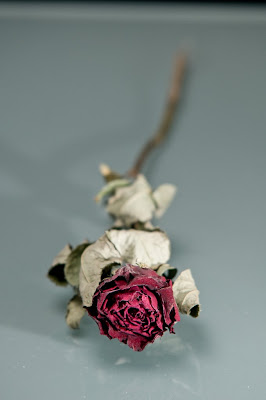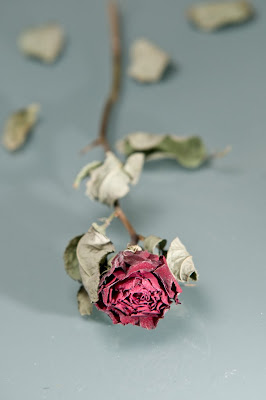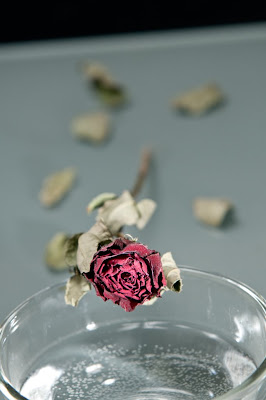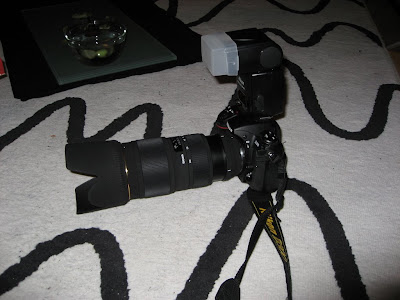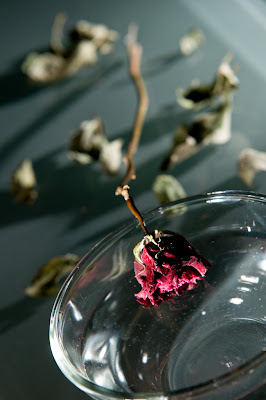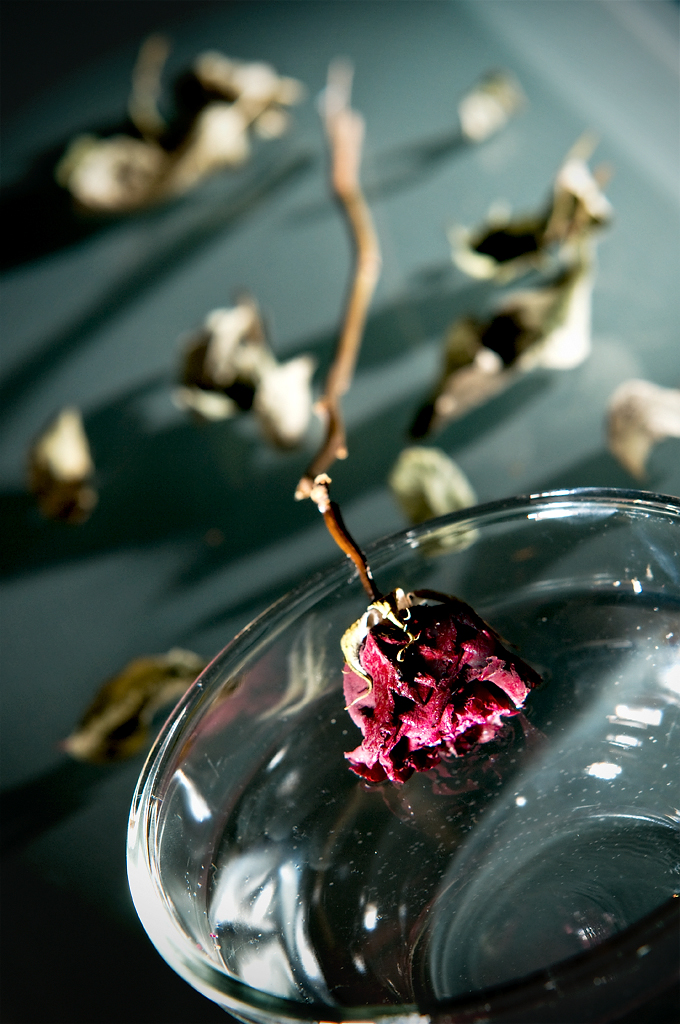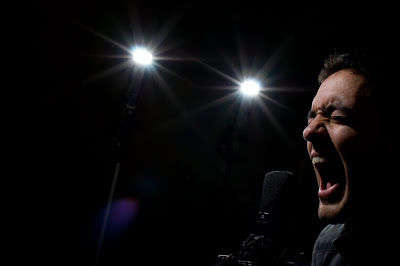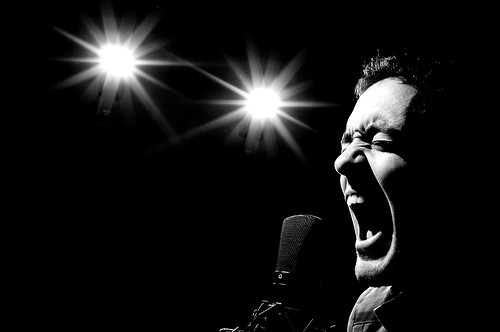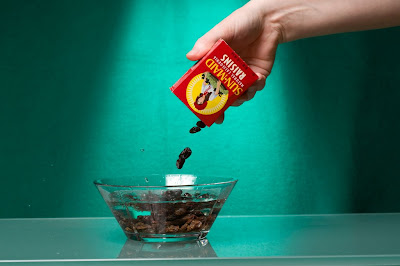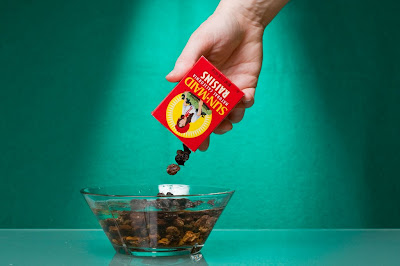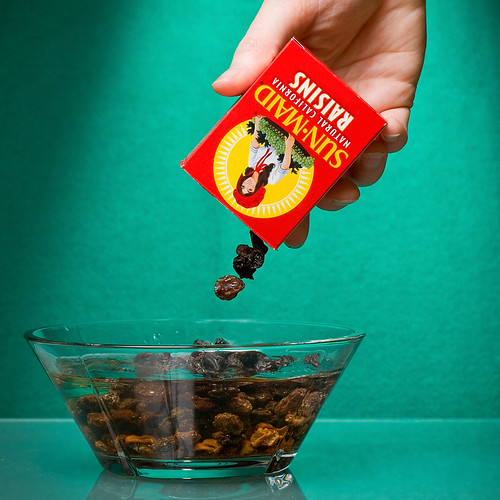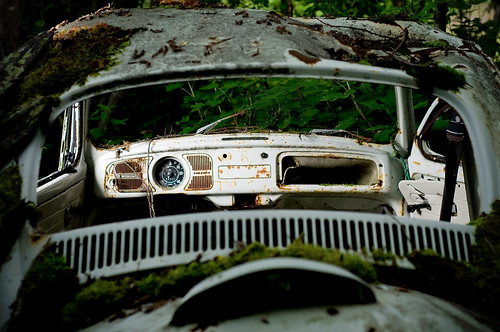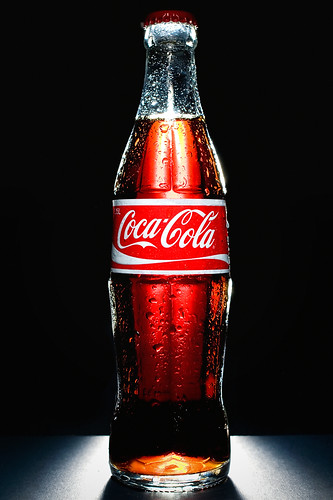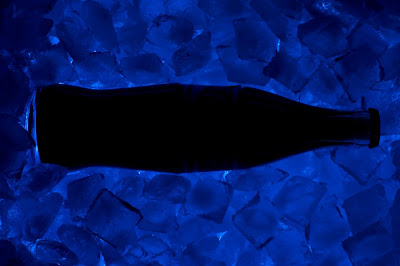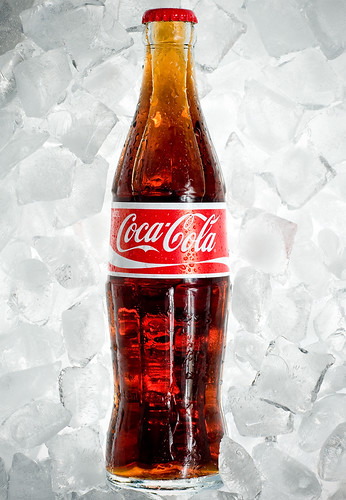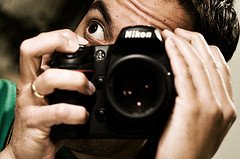First I tried to shoot some water shots (things falling in a bowl of water, water drops etc) but I didn't have a large enough glass containter for the shots I had in mind. Then I took out some colored glass-vases and lit them from above, from the side and below, but the results weren't pleasing. (Maybe one of them got a little interesting, but I'll describe it in another post).
I was about to call it the day, when I discovered a bouquet of dry roses hanging on the wall. I don't like to shoot flower shots if they don't have a story, but I thought I could make one with a dry rose. Hoping that my wife wouldn't get mad, I out one rose from the bouquet. Last time I took a rose from her, she wasn't too happy...
As I mentioned, I didn't have any plan for how to shoot this rose, but reglardless I needed something to put it on. I took out the glass plate I used in the raisin shot and wiped it clean. This is very important. Dust and fingerprints does not look good during a strobe attack, so keep it nice and clean. The black cloth was used for background.
I put the rose on the plate and mounted an umbrella with SB-600 on camera left and a bare strobe on camera right for fill. Here are some straight-out-of-the-camera (SOOC) examples:
So what did I learn by taking these three shots?
- Soft light is not suited for a dry rose. I thought it looked too boring and needed a little punch. So I decided to snoot both strobes to create some strong shadows.
- The rose just laying there was pretty boring, so I removed it leaves. Still a little boring. A bowl of water was standing right next to me (after the water shot attempts in the beginning) and I thought that a dry rose might want to drink water? Finally I had the story I was looking for!
I removed the umrella, put the flash on the floor (to create longer shadows) and made a new Taco Dinner cardboard snoot for the camera left strobe which lights up the rose. This is the final setup:
The reason why the flash to the right is upside down is because the light sensor for remote triggering is closest to the camera. I was too tired to experiment with manual flash output and relied only on TTL...
After some test shooting, I came up with these settings:
Right strobe: SB-600 85mm zoom, TTL -0.7
Left strobe : SB-600 85mm zoom, TTL 0.0
Lens: Sigma 70-200mm f/2.8 @ 102mm
Exposure: 1/250 @ f/5, ISO 200
Finding the right angle and crop was so hard. I was extremely tired, my wrist was hurting and was pretty much fed up with photography due to all the failed attempts earlier this evening. I had never aborted a strobe photo shoot without a result and I certaintly did not want this to be the first. After about 50 shots, I got a shot that I was pleased with.
The SOOC version:
This was done in Photoshop:
- Added a vignette
- Desaturated the reds a little
- Levels adjustment
- Removed some of the shadows on the rose (don't tell anyone, OK?)
The result
After I was done shooting, I had ask my wife why the 3 roses was hung on the wall. She said that they were the roses she gave me on our wedding day...(ops!) When she asked why I wondered about that, I had to tell that we had 2 beautiful roses left...
The next post will be titled "Why photographers need to know a marrige counsellor".

